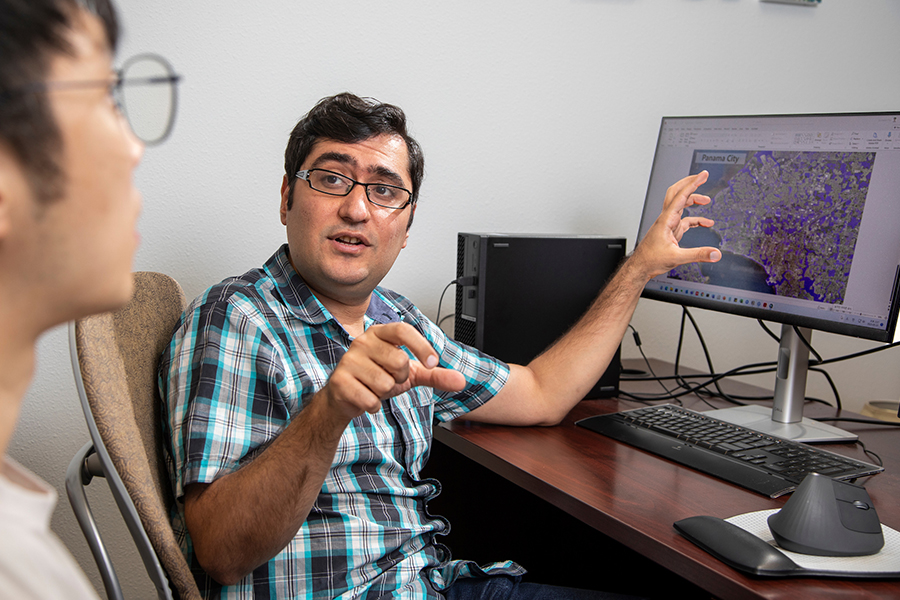
Floridians know to prepare for storms and the flooding that can accompany them.
A new study by Ebrahim Ahmadisharaf, a researcher at the Resilient Infrastructure and Disaster Response Center in the FAMU-FSU College of Engineering, will help residents in Bay County, Florida, to prepare.
Ahmadisharaf is leading a study to map infrastructure and assets that are threatened by flooding in the seaside county. He will examine the likelihood of inland and coastal flooding under historic conditions and projected sea-level rise. Researchers will use computational models to simulate flood characteristics under different flooding scenarios and perform geospatial analyses to identify at-risk areas. They’ll also complete outreach and education for the public and stakeholders.
“We aim to simulate flood characteristics such as depth and extent for different events such as a 100-year flood, which has a 1% annual chance of occurring, considering historic and future conditions, such as sea-level rise,” he said. “Using these simulations, we will identify at-risk areas in Bay County from inland and coastal flood types. This study will support the development of strategies and actions that mitigate flood risk and protect infrastructure and assets.”
WHY IT MATTERS: More than 175,000 people live in Bay County, and its location on the Gulf of Mexico puts it at risk for flooding from hurricanes. In 2018, Hurricane Michael killed more than two dozen people and caused billions of dollars of damage in the county. Knowing the areas where flooding is most likely to occur and what infrastructure will be affected allows residents and officials to develop plans to minimize harm.
WHO’S INVOLVED: The work will be led by Ahmadisharaf and Jessica Graham, executive director of the St. Andrew and St. Joseph Bays Estuary Program. A postdoctoral researcher and graduate student will be helping with this project.
WHERE’S THE MONEY COMING FROM: The Florida Department of Environmental Protection’s Resilient Florida Program is funding the $150,000 study.




